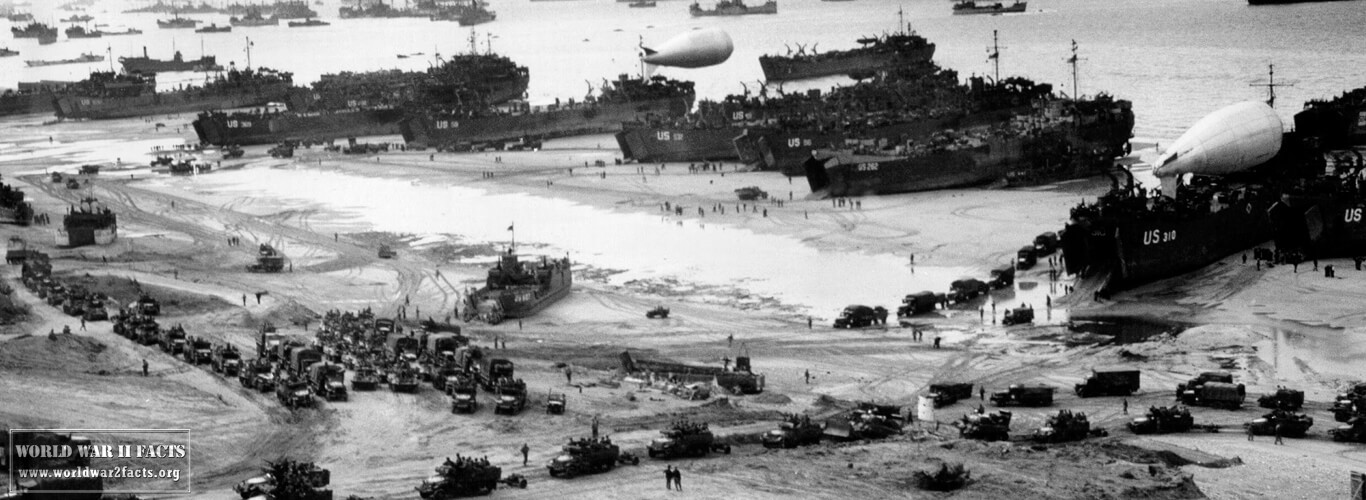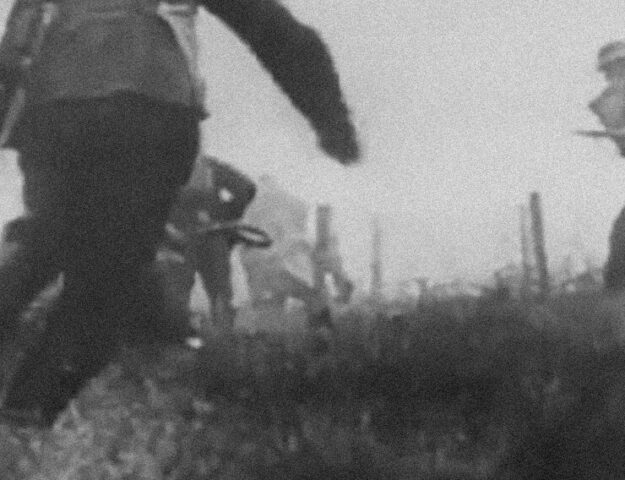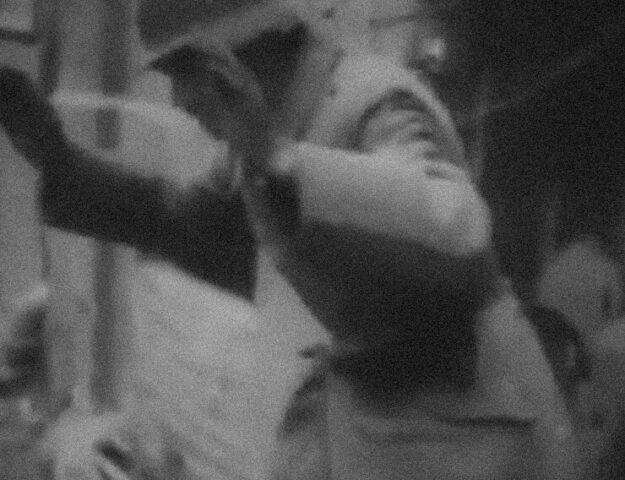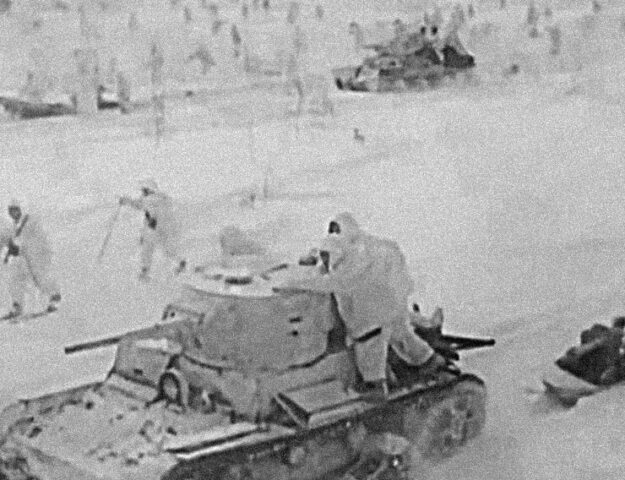Battle of Leyte Gulf Facts
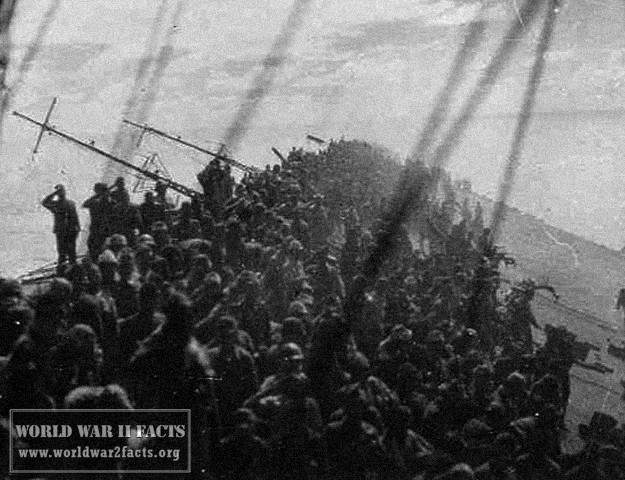
No matter how you look at it the Battle of Leyte Gulf is one, if not THE greatest naval battles in the history of warfare. The Battle is common referred to as both the “Second Battle of the Phillippine Sea” and the “Battles for Leyte Gulf.” The battle evolved from the U.S. invasion of Leyte island on October 20th and would be fought in the waters located near the Philippine islands of Samar and Leyte from October 23rd-26th, 1944 and involve both U.S. and Australian naval forces in action against the Imperial Japanese navy. The battle would be part of the Allied Strategy of isolating Japan from the countries they had previously occupied earlier in the war in order to prevent Japanese industry and forces from obtaining vital oil and other supplies needed to carry out the war effort.
Battle of Leyte Gulf Commanders
Contents
- Battle of Leyte Gulf Commanders
- Battle of Leyte Gulf Order of Battle
- Battle of Leyte Gulf Casualties
- Battle of Leyte Gulf Naval Losses
- Battle of Leyte Gulf Map
- Battle of Leyte Gulf Video
- Battle of Leyte Gulf Summary
- Battle of Leyte Gulf Timeline
- Battle of Leyte Gulf Conclusions
- Battle of Leyte Gulf References
Allied Powers
William Halsey, Jr (U.S. 3rd Fleet)

Thomas C. Kinkaid (U.S. 7th Fleet)
Clifton Sprague U.S. (Taffy 3 / Task Unit 77.4.3)
Jesse B. Oldendorf U.S. (Task Group 77.2)
John Augustine Collins (Australia) (Task Force 74)
Empire of Japan
Takeo Kurita (Center Force)
Shōji Nishimura † (Southern Force)
Kiyohide Shima (Southern Force)
Jisaburō Ozawa (Northern Force)
Yukio Seki † (Kamikazes)
Battle of Leyte Gulf Order of Battle
Allied Powers
8 fleet carriers
8 light carriers
18 escort carriers
12 battleships
24 cruisers
141 destroyers and destroyer escorts
Many PT boats, submarines, and fleet auxiliaries
About 1,500 planes
Empire of Japan
1 fleet carrier
3 light carriers
9 battleships
14 heavy cruisers
6 light cruisers
35+ destroyers
300+ planes (including land-based aircraft)
Battle of Leyte Gulf Casualties
Allied Powers
~3,000 dead;
1 light carrier,
2 escort carriers,
2 destroyers,
1 destroyer escort sunk
200+ planes
Empire of Japan
~10,500 dead;
1 fleet carrier,
3 light carriers
3 battleships,
10 cruisers,
11 destroyers sunk
~500 planes
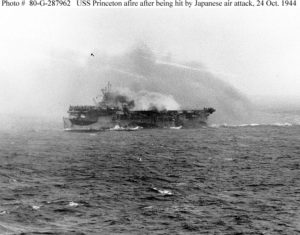
Photographed from USS South Dakota (BB-57).
Official U.S. Navy Photograph, National Archives.
Allied Losses (United States and Australia)
United States
Light Carrier: USS Princeton
Escort Carriers: USS Gambier Bay and USS St. Lo (sunk by kamikaze attack)
Destroyers: USS Hoel and USS Johnston
Destroyer Escort: USS Samuel B. Roberts
Four United States Navy ships and the HMAS Australia were damaged during the battle
Axis Powers Losses
Japan
Fleet Aircraft Carrier: Zuikaku (flagship of the decoy Northern Forces).
Light Aircraft Carriers: Zuihō, Chiyoda, and Chitose.
Battleships: Musashi, Yamashiro, and Fusō.
Heavy Cruisers: Atago, Maya, Suzuya, Chokai, Chikuma, and Mogami.
Light Cruisers: Noshiro, Abukuma, Tama, and Kinu.
Destroyers: Nowaki, Hayashimo, Yamagumo, Asagumo, Michishio, Akizuki, Hatsuzuki, Wakaba, and Uranami.
Battle of Leyte Gulf Map
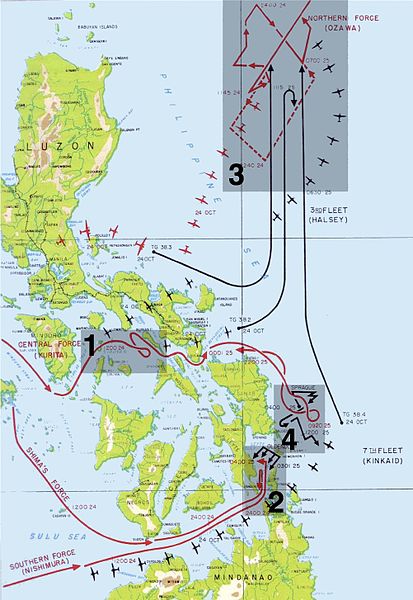
Battle of Leyte Gulf Video
Battle of Leyte Gulf Summary
The Battle of Leyte Gulf actually consisted of four separate battles or engagements between Allied Forces and the Imperial Navy. These included Battle of the Sibuyan Sea, the Battle of Surigao Strait, the Battle of Cape Engaño and the Battle off Samar and other naval action in the general vicinity. The series of battles that historians now label as the Battle of Leyte Gulf took place between October 23rd-26th, 1944.
Battle of Leyte Gulf Timeline
October 20th, 1944
General Douglas MacArthur lands on Leyte Island and begins to achieve his now famous goal of liberating the Philippines.
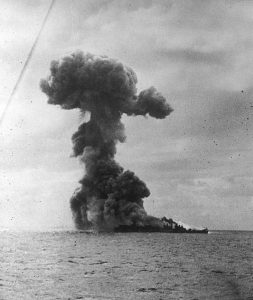
October 23rd, 1944
U.S. submarines ambush the Japanese Center Force in the Palawan Passage.
October 24th, 1944
Japanese aircraft attack the American Third Fleet. After the attack was complete, the U.S. lost the light aircraft carrier Princeton.
October 24th, 1944
The Battle of the Sibuyan Sea. The Empire of Japan would lose the battleship Musashi during the fighting
October 24-25, 1944
The Battle of Surigao Strait. Would result in the U.S. Navy defeating the Japanese Southern Force.
October 24-25, 1944
The Japanese Northern Force lures Admiral Halsey’s Task Force 38 north which would leave the San Bernardino Strait unguarded.
October 25th, 1944
Admiral Shima’s cruiser force fails to support the Japanese Southern Force and retreats.
October 25th, 1944
The Battle off Samar. American planes and ships defeat the Japanese Center Force in air and surface action
October 25th, 1944
The Battle off Cape Engaño that would result in the Japanese Northern Force being destroyed.
Battle of Leyte Gulf Conclusions
The tactical result of the Battle of Leyte Gulf was that the beacheads of the United States Sixth Army on Leyte Island were finally secure from Japanese attack from the sea. It would take several months of bitter land fighting; however, until the island was considered to be fully under control by the end of December 1944. Strategically, the Battle of Leyte Gulf concluded with the complete destruction of the Imperial Navy’s aircraft carriers operating under Ozawa’s Northern Force. With this destruction was the end of Japan as a naval power during World War 2. After the battle, the Imperial Navy would not meet the American navy in major action throughout the remainder of the war.
Leyte Gulf also resulted in the emergence of a new tactic to be used by the Japanese referred to as the Kamikaze (or Divine Wind) attack. Named after a major typhoon which has saved Japan from Mongol invasion during the 13th century, the Japanese would use suicide aircraft to crash into U.S. warships to inflect significant damage. The ultimate goal of the adoption of the kamikaze attack was to encourage the Americans to knock off the war and negotiate and end to it. Later in January of 1945, the Imperial Navy would launch significant Kamikaze attacks against the U.S. fleet in Lingayen Gulf after American landings on Luzon Island.
Battle of Leyte Gulf References
Task Force 34 Action Report: 6 October 1944 – 3 November 1944 (VAdm Lee)
Task Force 77 Action Report: Battle of Leyte Gulf (VAdm Kinkaid)
‘Loss of the USS Princeton (CVL-23), 24 October 1944′ – United States’ Naval Historical Center
Oral history interview with Edward Gilbert, a member of the Army Boat Regiment during the Battle of Leyte Gulf from the Veterans History Project at Central Connecticut State University
